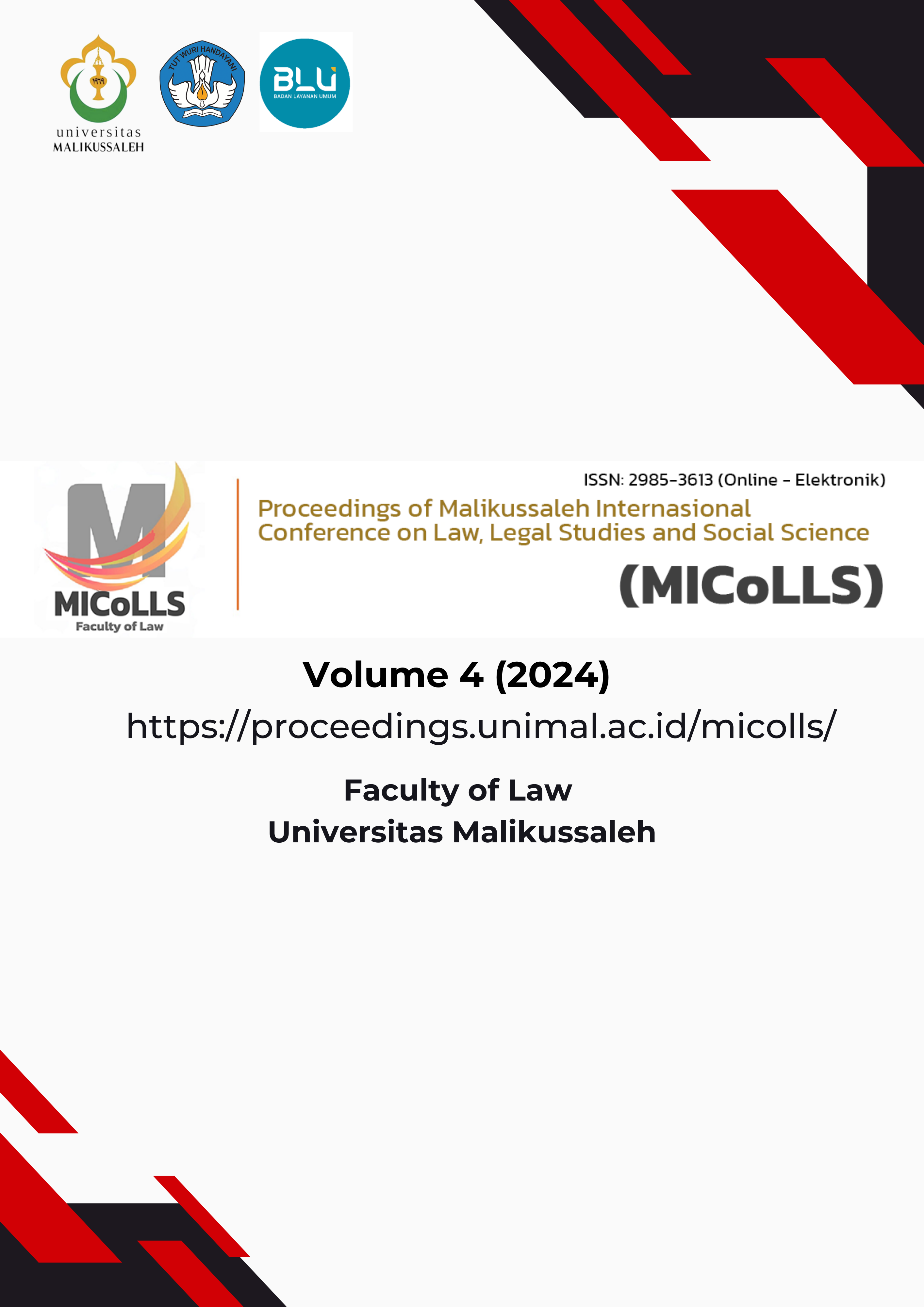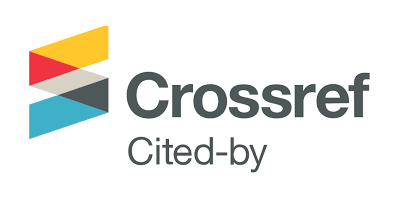Settlement of Medical Negligence Cases in Malaysia
Keywords:
Medical Negligence, Malaysia, Legal PerspectiveAbstract
The issue of medical negligence is not a new phenomenon in the doctoral profession, and even medical negligence has become a global issue. Although Malaysia is one of the few countries where medical emergencies occur, but the number of medical negligence increases each year. The Bolam v Friern Hospital Management Committee 1957 case has long been a measure of cases in medical negligence in Malaysia. However, after the Federal Court's decision in the case of Foo Fio Na v Dr. Foo Sook Mun & Anor 2007, there was a change in the approach taken by a Malaysian court, which showed that the courts in Malaysia now no longer prioritize the Bolam test in medical negligence cases. In Civil Act 1956 and the Medical Act 1971, medical negligence is only regulated in a civil aspect so that the guilty physician will be punished to pay compensation to the patient. Generally, medical negligence cases are resolved through the court. However, it is difficult to prove the negligence done by the doctors and the length of time needed to take the case of medical negligence through the court has prompted physicians and patients to bring their case through the mediation forum.
References
Abdul Monir Yaacob. (2009). Perlaksanaan Perundangan Islam di Malaysia: Satu Penilaian. Jurnal Fiqh, 9(6), 1–20. http://myais.fsktm.um.edu.my/12423/
Abdullah, H. (2011). Court awards RM870,000 to couple and son over medical negligence. The Star Online. http://thestar.com.my/news/story.asp?file=/2011/1/21/nation/201101211 41028&sec=nation
Anonymous. (2006). Kamus New Oxford (2nd ed.). Oxford Fajar Sdn. Bhd.
Azira, T. N. (2011). Pengaplikasian Kaedah Pengantaraan bagi Menyelesaikan Pertikaian Kecuaian Perubatan di Malaysia. The National Conference on Dispute Resolution, 14–15.
Baharom, N. (2004). Kamus Dewan (2nd ed.). Dewan Bahasa dan Pustaka.
Berg, J. (2001). Informed Consent Legal Theory and Clinical Practice (2nd ed.). Oxford University Press.
Brazier, M., & Miola, J. (2000). Bye-bye Bolam: a medical litigation revolution? Medical Law Review, 8(1), 85–114. https://doi.org/10.1093/medlaw/8.1.85
Buang, S. (1999). The Law of Negligence in Malaysia. Dewan Bahasa dan Pustaka.
Dato’ James Foong. (2003). Medical Neg. Claim: Evidence, Procedure, Trial & Assessment of Damages, Issues in Medical Law & Ethics (A. H. M. A. Puteri Nemie Jahn Kassim (ed.)). IIUM.
Deakin, B. (1999). Tort Law. OUP.
Dickens, B. (1993). Medicine and the Law. Dartmouth.
ER, A. (2010). Isu-isu Perundangan dan Kehakiman dalam Kewangan Islam. Islamic Finance, 146.
Glenn, H. (2005). Solving Civil Justice Problems: What Might Be Best? Scottish Consumer Seminar on Civil Justice. http://www.scotconsumer.org.uk/civil/seminars/speakers/Glenn
Hambali, S. N., & Khodapanahandeh, S. (2014). A Review of Medical Malpractice Issues in Malaysia under Tort Litigation System. Global Journal of Health Science, 6(4), 76–83. https://doi.org/10.5539/gjhs.v6n4p76
Harder, S. (2014). Contributory Negligence in Contract and Equity. Otago Law Review, 13(2), 307–332.
Islam, M. Z. (2013). Medical Negligence in Malaysia and Bangladesh: A comparative study. IOSR Journal of Humanities and Social Science, 14(3), 82–87.
Jone, RN & Buston, F. (1995). Medical Negligence Case Law. Butterworths.
Katherine, V. (2000). Private Justice: The Law of Alternative Dispute Resolution. Foundation Press.
Lega, Z. (2011). Kes Tertunggak Di Mahkamah Turun Secara Drastik. Bernama. http://www.bernama.com/bernama/v8/bm/newsindex.php?id=610934
Maanen, J. Van. (1979). Reclaiming Qualitative Methods for Organizational Research: Preface. Administrative Science Quarterly, 24, 520–526. https://doi.org/https://doi.org/10.2307/2392358
MacFarlane, J. (1997). Rethingking Disputes: The Mediation Alternative London. Cavendish Publishing Limited.
Mackie K, Miles D, Marsh W, A. T. (2000). The ADR Practical Guide, Commercial Dispute Resolution. Butterworths.
McCracken, G. . (1998). The Long Interview. Sage.
Ministry of Health Malaysia. (2010). Ministry of Health Malaysia Annual Report 2010. Ministry of Health Malaysia Website. http://www.moh.gov.my/images/gallery/publications/md/ar/2010- 2.pdf
Mulcany, L. (1999). Mediation and Medical Negligence Claims:An Option for the Future? TSO.
Naning, R. (2005). Malpraktek Profesyion Doktor. Dialogue Medical Malpractice, 2.
Nawi, M. (2011). Skop Kelakuan Buruk Dalam Kod Kelakuan Profesional 1987: Satu Analisis Menurut Etika Perubatan Islam. JUUM, 1(15), 53–74.
Nemie, P. (2008). Mediating Medical Negligence Claims In Malaysia: An Option For Reform? http://www.asiapacificmediationforum.org/resources/2008/31-PUTERI_NEMIE_JAHN_KASIM.pdf
Ngah, A. C. (1999). Medical Negligence Litigation: Is defensive Medicine Now the Norm? Commonwealth Law Conference. http://www.lexisnexis.com.my/free/articles/anisah.htm
Ngah, A. C. (2007). Perkembangan Undang-Undang Perubatan di Malaysia: Cabaran dan Masa Depan. Universiti Kebangsaan Malaysia.
Othman, A. (2002). Introducing Alternative Dispute Resolution in Malaysia: Prospects and Challenges. Malayan Law Journal, 2, ccxxiv.
Puteri, N. J. (2003). Medical Negligence Law in Malaysia. International Law Book Services.
Puteri, N. J. (2004). Medical Negligence Litigation in Malaysia : Whither Should We Travel ? Journal of Malaysian Bar, 1, 14–25.
Puteri Nemie Jahn Kassim, & Khadijah Mohd Najid. (2013). Medical Negligence Disputes in Malaysia : Resolving through Hazards of Litigation or through Community Responsibilities ? International Journal of Social, Human Science and Engineering, 7(6), 1–9.
Rogers, W. (2006). Winfield & Jolowicz on Tort. Sweet & Maxwell.
Rusnadewi Abdul Rashid. (2013). Memartabatkan Undang-Undang Islam Dan Mahkamah Syariah Dalam Undang-Undang Tanah Di Malaysia. Jurnal Hadhari, 5(2), 26. https://doi.org/10.1017/CBO9781107415324.004
Saliza. (2007). Prinsip Bolam Lwn. Prudents Patient Test, Manakah Membawa Manfaat Kepada Masyarakat: Satu Rujukan ke Atas Kes-kes yang Diputuskan pada Tahun 1990-2005.
Sappideen, C. (2010). Bolam in Australia: More Bark than Bite. UNSW Law Journal, 33(2), 386–424.
Siti Zubaidah Ismail. (2011). Medical Negligence According To The Law of Tort And Its Authority From the Shariah. Journal Syariah, 19(2), 133–162.
Studdert, D., Mello, M., & Brennan, T. (2004). Health Policy Report. N Engl J Med. http://economics-files.pomona.edu/marvasti/data/HealthCareClassArticles/Iglehart,2002.pdf
Talib, N. (2006). Prinsip-prinsip Asas Tort. Sweet & Mazwell Asia.
The Joint Commission. (2015). Patient safety systems. Comprehensive Accreditation Manual for Hospitals Update 2, 1(January), PS1–PS54. https://www.jointcommission.org/assets/1/18/PSC_for_Web.pdf
Tun Arifin Zakaria. (2014). Mediasi Mampu Kurangkan Kes Tertunggak. http://www.themalaysianinsider.com/bahasa/article/mediasi-mampu-kurangkan-kes-tertunggak-kata-ketua-hakim-negara#
Walsh, C., & Abelson, H. T. (2008). Medical Professionalism: Crossing a Generational Divide. Autum Journal, 51(4), 554–647.
Ware, S. J. (2001). Alternative Dispute Resolution. http://books.google.co.ke/books/about/Alternative_Dispute_Resolution.html?id=8lVLAQAAIAAJ&pgis=1
World Medical Association. (2014). Statement on Medical Malpractice. WMA General Assembly. Santiago. http://www.wma.net/en/30publications/10policies/20
Yaqin, A. (2007). Legal Research and Writting. Malayan Law Journal SDN BHD, 1, 10.
Yeoh, K. Q. (2004). Essentials of Medical Law. Thomson, Sweet & Maxwell Asia.
Z, N. (2004). Pentadbiran undang-undang Islam di Malaysia: Sebelum dan Menjelang Merdeka. Utusan Publications & Distributors Sdn. Bhd.
Downloads
Published
Issue
Section
License
Copyright (c) 2025 Muhammad Hatta, Sumiadi Sumiadi, Zulfan Zulfan

This work is licensed under a Creative Commons Attribution-ShareAlike 4.0 International License.
Authors retain the copyright and grant the proceeding the right of first publication. This work is licensed under a Creative Commons Attribution-ShareAlike 4.0 that allows others to share the work with an acknowledgement of the Creative Commons Attribution-ShareAlike 4.0 that allows others to share work with an acknowledgement of the works authorship and initial publication in this proceeding.
All articles in this proceeding may be disseminated by listing valid sources, and the article's title should not be omitted. The content of the article is liable to the author.
Authors are able to enter into separate, additional contractual arrangements for the non-exclusive distribution of the proceeding's published version of the work (e.g., post it to an institutional repository or publish it in a book), with an acknowledgement of its initial publication in this proceeding.
Authors are permitted and encouraged to post their work online (e.g., in institutional repositories or on their website) before and during the submission process, as it can lead to productive exchanges and earlier and greater citation of published work.
In the dissemination of articles, the author must declare the Proceedings of Malikussaleh International Conference on Law, Legal Studies and Social Science (MICoLLS) as the first party to publish the article.






